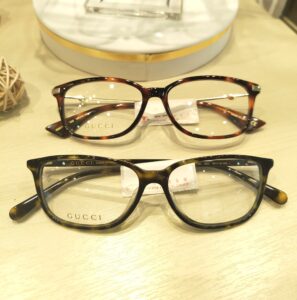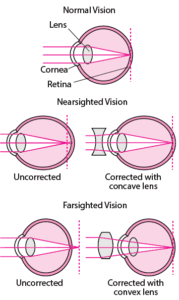Kedai cermin mata is an eye glass shop. Do you find yourself squinting like Senor Chang from The Community when you’re doing your daily tasks? Maybe that’s a sign that YOU need to get your eyes checked at a kedai cermin mata (eyeglass shop). Common visual symptoms that are usually ignored include squinting, glaring, headaches, and migraines. Most people would take medication for the latter two. Unfortunately, no amount of pain relievers will resolve your headache and migraine if they are caused by the refractive error of your eyes.
Let’s go back a little in history: humans have been wearing glasses since the 1200’s! Back then, a pair of spectacles was believed to be made from pebble quartz or a sea green stone called beryllium aluminium silicate. Due to their curved surfaces, they demonstrated the capacity to magnify objects seen through it. Mid 1400’s Johann Gutenberg made the printing press famous worldwide (though it was actually the Chinese that started printing books/articles using wooden stamps), which in turn made books and newspapers more accessible. By the 1700’s, people in Europe were so obsessed with reading that most farsighted people had monocles.

(pic: not real monocle, just Mad-Eye Moody)
In the 1800’s, the Chinese made frames from literal tortoise shells. Although you may not find actual tortoise shell frames in kedai cermin mata stores now, you can still find its design at almost all optometry practice. (https://www.aao.org/senior-ophthalmologists/scope/article/brief-history-of-spectacles)

(pic: not real tortoise shell)
Spectacles lenses used to be made using mineral glass, which is why we still say “a pair of glasses” today. However, mineral glass is rarely used in the modern day, having been swapped out for plastic in most kedai cermin mata. In addition to that, there are extra functions added to the lens, such as UV protection, colour changing photochromic lens, and many more.
Next, let’s look at how spectacles give us clear vision:
Basically, when your eyes don’t bend light properly, things can get a little fuzzy. Light enters your eyes and needs to be bent or refracted so it focuses right on your retina, located at the back of your eye. But if your eyeball’s shape isn’t quite right, or your cornea (the clear front section of your eye) isn’t shaped just so, the light doesn’t hit the right spot. That’s when you get blurry vision.

(Picture: https://www.msdmanuals.com/home/eye-disorders/refractive-disorders/overview-of-refractive-disorders)
There are a few types of refractive errors, like nearsightedness (you can see things close to you but not far away), farsightedness (you can see far into the distance but have trouble seeing things up close), and astigmatism (blurry vision for both near and faraway objects, caused by the cornea’s curve being uneven).
So! Don’t waste anymore time and get your eyes checked today at a reputable kedai cermin mata. Because sometimes the things that plague our daily lives have very simple solutions.
Caring for Your Eyes Beyond Glasses
While corrective eyewear plays a crucial role in maintaining good vision, it’s important to remember that eye health goes beyond just seeing clearly. Here are some additional tips to keep your eyes healthy:
Maintain a healthy diet
A diet rich in fruits, vegetables, and omega-3 fatty acids can help nourish your eyes and protect them from age-related macular degeneration and cataracts.
Protect your eyes from UV rays
Just like your skin, your eyes are susceptible to sun damage. Wearing sunglasses that block UVA and UVB rays is essential for protecting your eyes from cataracts and other sun-related eye problems.
Limit screen time
Spending excessive time staring at digital screens can contribute to eye strain and dryness. Taking regular breaks and practicing the 20-20-20 rule (every 20 minutes, look at something 20 feet away for 20 seconds) can help reduce eye fatigue.
Don’t smoke
Smoking is a major risk factor for several eye diseases, including macular degeneration and diabetic retinopathy. Quitting smoking is one of the best things you can do for your overall health, including your vision.
Regular eye exams are key
Even if you don’t experience any vision problems, scheduling regular eye exams at a kedai cermin mata is vital for early detection and treatment of eye diseases. Early intervention can often prevent vision loss or slow the progression of certain eye conditions.

